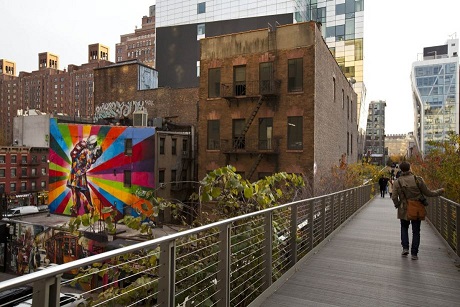Urban spaces serve as the heart of cities, where people live, work, and interact. Amidst the hustle and bustle, public art emerges as a vital component that enhances the cultural, aesthetic, and social fabric of these environments. Public art, ranging from murals and sculptures to installations and performances, plays a multifaceted role in transforming urban spaces into vibrant, engaging, and inclusive areas.

1. Enhancing Aesthetic Appeal
Public art significantly enhances the visual appeal of urban spaces. By transforming blank walls, dull plazas, and neglected corners into vibrant canvases, public art adds color, creativity, and character to cities. This transformation can make urban environments more inviting and enjoyable for residents and visitors alike. For instance, murals that depict local history or abstract designs can turn a mundane street into a visually stimulating experience. Sculptures and installations can add unique focal points, creating landmarks that enrich the urban landscape.
2. Fostering Community Identity and Pride
Public art often reflects the unique identity and heritage of a community. It serves as a medium for expressing collective memories, values, and aspirations. When communities participate in the creation of public art, it fosters a sense of ownership and pride. Local narratives, cultural symbols, and historical events depicted in public artworks reinforce a shared identity and strengthen the bond among community members. For example, a mural celebrating a neighborhood’s cultural diversity can instill pride and unity among its residents.
3. Stimulating Economic Growth
Public art can stimulate economic growth by attracting tourism and boosting local businesses. Cities known for their vibrant public art scenes, such as Berlin, New York, and Barcelona, draw tourists eager to explore their creative landscapes. Art installations and cultural events can increase foot traffic in commercial areas, benefiting local shops, restaurants, and hotels. Additionally, public art projects can create job opportunities for artists, designers, and cultural workers, contributing to the local economy.
4. Promoting Social Inclusion and Engagement
Public art has the power to promote social inclusion and engagement by providing a platform for diverse voices and perspectives. Art in public spaces is accessible to everyone, breaking down barriers of entry that often exist in traditional art venues like galleries and museums. Inclusive public art projects can highlight marginalized communities, address social issues, and spark conversations about equity and justice. For instance, an installation addressing homelessness can raise awareness and empathy, encouraging community dialogue and action.
5. Enhancing Public Spaces and Safety
Well-designed public art can enhance the functionality and safety of urban spaces. Art can be integrated into public infrastructure, such as benches, lighting, and bike racks, making these amenities more attractive and user-friendly. Moreover, vibrant and well-maintained public art can deter vandalism and reduce crime by fostering a sense of community ownership and vigilance. For example, a brightly painted underpass can transform a previously unsafe area into a welcoming passage.
6. Inspiring Creativity and Innovation
Public art inspires creativity and innovation by challenging conventional perceptions and encouraging new ways of thinking. Interactive installations, kinetic sculptures, and avant-garde performances invite the public to engage with art in novel and unexpected ways. This stimulation of the imagination can extend beyond the art itself, influencing how people approach problems and opportunities in their daily lives. Cities that embrace public art create environments that nurture creative thinking and cultural vitality.
Conclusion
Public art plays a crucial role in shaping the character and quality of urban spaces. It enhances aesthetic appeal, fosters community identity and pride, stimulates economic growth, promotes social inclusion and engagement, enhances public spaces and safety, and inspires creativity and innovation. As cities continue to grow and evolve, integrating public art into urban planning and development will be essential for creating vibrant, inclusive, and resilient communities. By celebrating and investing in public art, cities can transform their spaces into dynamic, culturally rich environments that reflect the diverse tapestry of their inhabitants.



